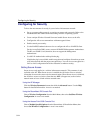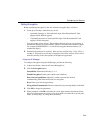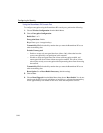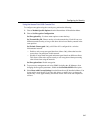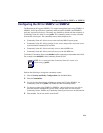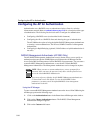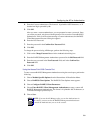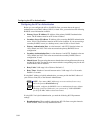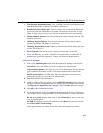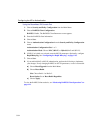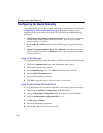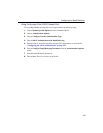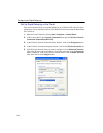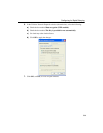
Configuring the AP for Authentication
5-32
Configuring the AP for Authentication
Before you can configure the AP as a RADIUS client, you must choose the type of
authentication to use: MAC address, 802.1X, or both. Also, you need to have the following
RADIUS server information available:
• Primary Server IP Address: IP Address of the primary RADIUS authentication
server. The IP Address must be an IP Version 4 address.
• Secondary Server IP Address: IP Address of the secondary RADIUS authentication
server, if used. The IP Address must be an IP Version 4 address. If you are not using a
secondary RADIUS server (as a backup server), enter 0.0.0.0 or leave it blank.
• Primary Authentication Port: A value between 1 and 65535. Standard values are
1812 (default) and 1645. This value must match the primary RADIUS Server
configuration.
• Secondary Authentication Port: A value between 1 and 65535. Standard values are
1812 (default) and 1645. This value must match the secondary RADIUS Server
configuration, if used.
• Shared Secret: The text string that ensures that the data exchanged between the server
and the AP is valid. The shared secret must match the corresponding entry for the AP
in the RADIUS Server database.
• Retry Limit: Valid range is 0 to 20 times. Default is 5.
• Retry Timer: Number of seconds between retries. Valid range is 2 to 10 seconds.
Default is 5 seconds.
If using MAC Address or hybrid authentication, you must provide the MAC address of
your wireless client (PC) to the Network Administrator.
If using 802.1X or hybrid authentication, you need the following 802.1X parameter
settings:
• Reauthentication: When enabled, authenticates 802.1X clients at regular intervals.
When disabled, clients are only authenticated once.
NOTE: User names (MAC Addresses) are case-sensitive (lower-case),
and in the format: 00-e0-63-ab-ce-ef
If possible, configure the RADIUS server to authenticate the user without
checking a password. Otherwise, use a password of “NOPASSWORD”
for all of the MAC Address based user names.
NOTES



